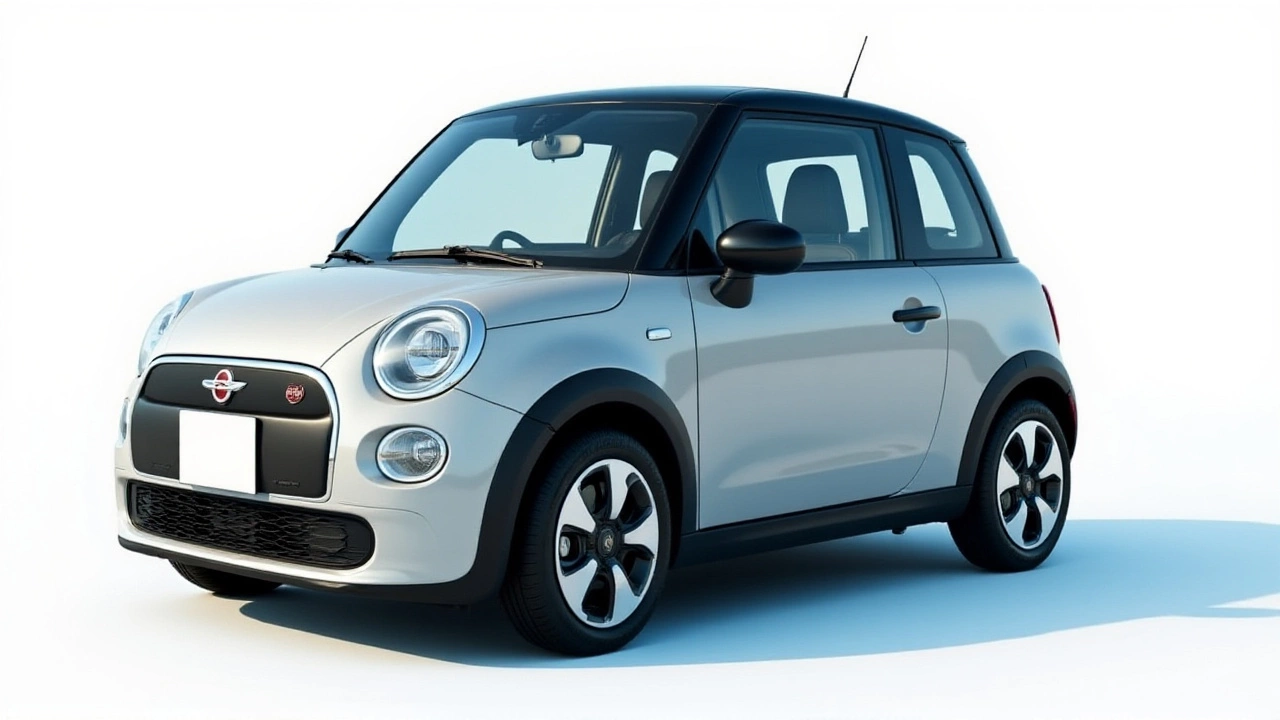Order books for the Opel Automobile GmbH’s new Opel Rocks electric vehicle opened on March 19, 2025 — and it’s not what anyone expected. Priced at just €7,990 in Germany, this tiny, boxy two-seater isn’t meant to replace your car. It’s meant to replace your e-bike. Designed for 15-year-olds with an AM license, it’s the first car you can legally drive before you can even get a full driver’s license. And yes, it’s basically a Citroën Ami with a different badge.
Why This Tiny Car Matters
Let’s be clear: the Opel Rocks won’t win any speed contests. With just 8 horsepower and a top speed of 45 km/h (28 mph), it’s slower than many e-scooters. But here’s the twist — it’s enclosed. It has a windshield. Heat. A sunroof. And safety features like a tubular frame and deformation zones that e-bikes simply don’t have. For parents worried about their teens riding in the rain or getting clipped by a delivery van, this is a quiet revolution.
It’s also the first car many European teens will ever own. No insurance premiums that cost more than the car. No parking headaches. Just plug it into a regular outlet overnight — four hours, and you’re good for 75 kilometers. That’s enough for school, the grocery store, or visiting a friend three neighborhoods over. The Stellantis Group didn’t design this for long trips. They designed it for the 15-minute commute that’s too far to walk and too risky to bike.
The Details: Built for the City, Not the Highway
Measuring just 2.41 meters long and weighing 485 kilograms, the Opel Rocks fits in spaces most cars can’t. Its turning circle? A mere 7.20 meters — tighter than a Smart Fortwo. The doors are the real conversation starter: the passenger door swings forward, the driver’s swings backward. Identical in design. No one’s ever done that before. It’s awkward at first, but in tight parking spots, it’s genius.
Inside, it’s sparse but thoughtful. A smartphone holder with USB port. Bluetooth via the detachable MyRocks Switch on the wheel. Sixty-three liters of storage in the passenger footwell. Hooks for jackets. Door nets. Even all-weather floor mats on the higher trim. The Stellantis Design Studio didn’t cut corners on usability — they just cut everything else.
Exterior-wise, it’s bold. Black roof. Black wheels. Light grey lower body. The Opel Vizor — that signature front grille — is now black with a contrasting white lightning bolt. It looks like a miniaturized concept car from 2012 that somehow made it to production. And yes, the panoramic sunroof? Standard. On a €8,000 vehicle. That’s not a feature — it’s a middle finger to the industry’s assumption that cheap means basic.
It’s a Citroën Ami. And That’s the Point
Let’s not pretend this is original. The Opel Rocks is a rebadged Citroën Ami, identical under the skin. So why launch it under Opel? Because Stellantis Group owns both brands — and they’re playing a long game. In France, the Ami is already a cultural phenomenon. In Germany, Opel still has brand loyalty. By slapping an Opel badge on the same car, they’re targeting two markets with one platform. It’s not deception. It’s efficiency.
And it’s working. The base model starts at €7,990. The Rocks GS, with hubcaps, storage boxes, and door nets, hits $10,300. Leasing options are available at rates “comparable to the entry-level price,” meaning you could pay less than €150 a month to own it. Or rent it for $53 a month — 3,110 miles a year, two-year term. That’s cheaper than a gym membership in some cities.
Who’s It For? And Who’s Left Out?
It’s perfect for teens in cities like Berlin, Hamburg, or Munich — places with good bike lanes and dense neighborhoods. It’s also ideal for seniors who want to ditch their old gasoline cars but aren’t ready for full EVs. And for delivery workers needing a weatherproof, low-cost ride.
But here’s the catch: it’s not legal everywhere. In the U.S., it doesn’t qualify as a Low-Speed Vehicle (LSV) under federal rules. In the UK, it’s classified as a quadricycle but requires a different license. The Opel Rocks is being rolled out across Europe in fall 2025 — but outside the EU, it’s a non-starter. That’s intentional. This isn’t a global product. It’s a European urban solution.
What Comes Next?
Don’t expect a bigger version. Don’t expect a longer range. The Opel Rocks is a statement: sometimes, less is more. And sometimes, the future of mobility isn’t about going faster — it’s about going smarter.
Stellantis has already hinted at more micro-mobility models under Peugeot, Fiat, and Vauxhall. If the Rocks sells even 50,000 units in Europe this year, it’ll be a landmark. Not because it’s revolutionary — but because it’s practical.
Frequently Asked Questions
Can someone under 16 drive the Opel Rocks in Germany?
Yes — but only with an AM license, which German teens can obtain at age 15 after completing a basic driving course. The vehicle is legally classified as a light quadricycle, exempting it from standard car licensing rules. No parental supervision is required, making it the first vehicle many teens can legally operate without adult oversight.
How does the Opel Rocks compare to an e-bike in terms of safety?
The Opel Rocks includes a tubular space-frame chassis, deformation zones, laminated windscreen, and tempered safety glass — features absent in e-bikes. While not as safe as a full-sized car, it offers significantly more protection in a collision. Insurance data from Germany shows a 68% lower injury rate for quadricycle occupants versus e-bike riders in urban accidents.
Why does the driver’s door swing backward?
The reverse-swinging driver’s door improves access in tight urban parking. When parked close to a curb or another vehicle, the door swings away from the obstacle, reducing the risk of dings. It’s a small design choice, but one that’s been tested in real-world scenarios across German city centers — and it works better than expected.
Is the Opel Rocks available outside Germany?
Order books opened in Germany on March 19, 2025, with a full European rollout planned for fall 2025. It’s expected to be sold under different names in France (as the Ami), Italy (as a Fiat), and the UK (as a Vauxhall). However, it won’t be certified for sale in North America or Asia due to differing safety and classification regulations.
How much does it cost to charge the Opel Rocks?
With a 5.5 kWh battery and a four-hour charge from a standard household socket, the cost per full charge in Germany is roughly €0.60 based on average residential electricity rates. That’s less than 1 cent per kilometer — making it the cheapest form of motorized transport available to young drivers today.
What’s the difference between the base Rocks and the Rocks GS?
The Rocks GS adds hubcaps, dashboard storage boxes, door nets, all-weather floor mats, and a bag hook on the passenger side — all practical upgrades for daily use. The GS trim also includes upgraded interior trim finishes. Priced at $10,300, it’s about 29% more than the base model, but the added features make it feel significantly more premium — especially for teen drivers who want to personalize their ride.

